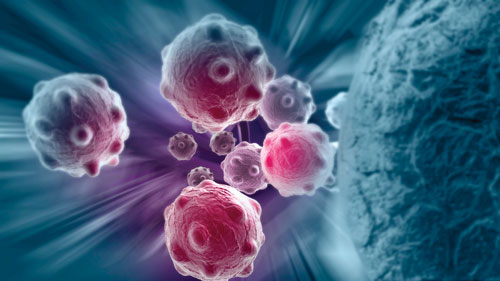
Researchers from the National University of Singapore have developed a method of quickly identifying cancer cells based on specialized acidity-based imaging and machine learning.
The team thinks this technique will be very useful for researchers and clinicians as it can be used to assess mixed cell populations without killing the cells. It can also be used to detect a few cancerous cells among many healthy cells, which could help provide a more accurate prognosis and better reflect the impact of cancer treatment.
Different cells in the body have different levels of pH based on their individual activities and internal chemistry normally ranging from 4.7 to 8.0. When the ‘normal’ pH for a given cell is higher or lower than it should be it can be a marker of disease such as Alzheimer’s or cancer.
Cancer cells have significantly higher intracellular pH than non-cancerous cells, whereas the extracellular environment is more acidic than that of normal tissues. “This phenomenon has been observed in the early phases of cancer development and the differences in pH between the intracellular and extracellular environment tend to increase during neoplastic progression,” explain the researchers in the journal APL Bioengineering.
Chwee Teck Lim, Ph.D., a professor of mechanobiology at the National University of Singapore led the research. The method Lim and team used involves treating cells with a chemical called bromothymol blue, which is pH-sensitive and changes color based on the acidity of the solution it is added to. Each cell has a unique color fingerprint of red, green and blue shades depending on its pH.
The acidity-based imaging used in this study was grounded on previous work on pH imaging of cancer cells showing that it was possible to accurately differentiate cancer cells from non-cancerous cells using this technique.
The researchers first created a ‘visual algorithm’ where they tested many cancerous and non-cancerous cell types and recorded their images. They then automated the cell identification process using machine learning-based image analysis.
The technology was tested on single-type cell lines, where it was more than 90% accurate at detecting cancerous versus non-cancerous cells. Lim and colleagues also tested it on mixed cell lines to assess its accuracy at differentiating between cells in the same culture and it was 75-80% accurate at classifying cell lines containing two or more cell types.
It’s early days and the technology needs to be tested more widely, but the researchers think their technology could also be used to identify different cell types as well as simply evaluating whether or not a cell is cancerous.
Labeling of single cells is becoming more and more important, but current techniques can be somewhat limiting. For example, using fluorescent probes or nanoparticles can accurately label cells, but can be time consuming and difficult to carry out. Some techniques also require the cells to be killed so imaging can be carried out.
“The ability to identify single cells has acquired a paramount importance in the field of precision and personalized medicine,” said Lim. “This is because it is the only way to account for the inherent heterogeneity associated with any biological specimen.”
This pH-based technique allows imaging of live populations of mixed cells and making use of machine learning can help automate the process and make it quicker and easier for non-experts to apply.
“One potential application of this technique would be in liquid biopsy, where tumor cells that escaped from the primary tumor can be isolated in a minimally invasive fashion from bodily fluids,” Lim said.











